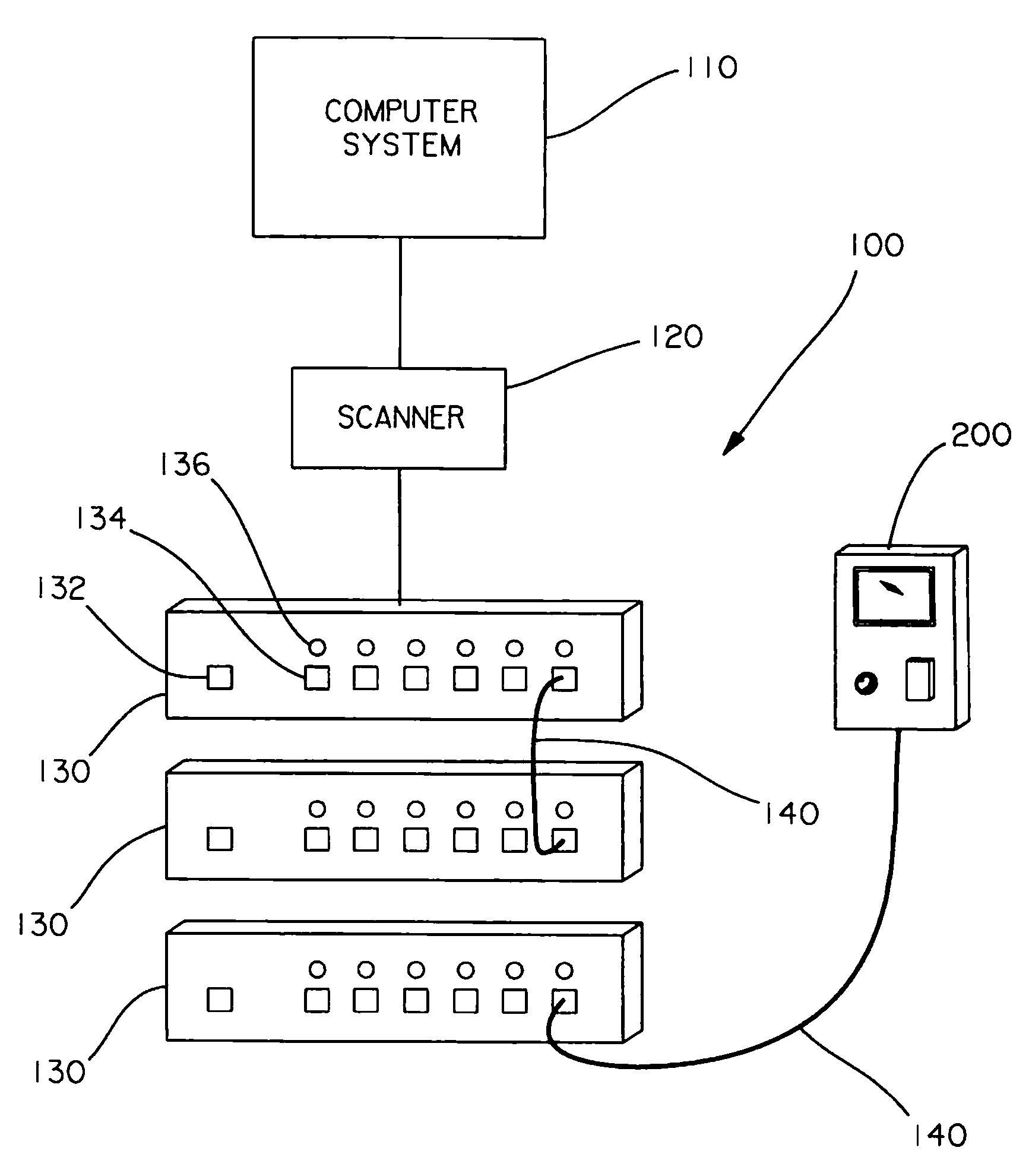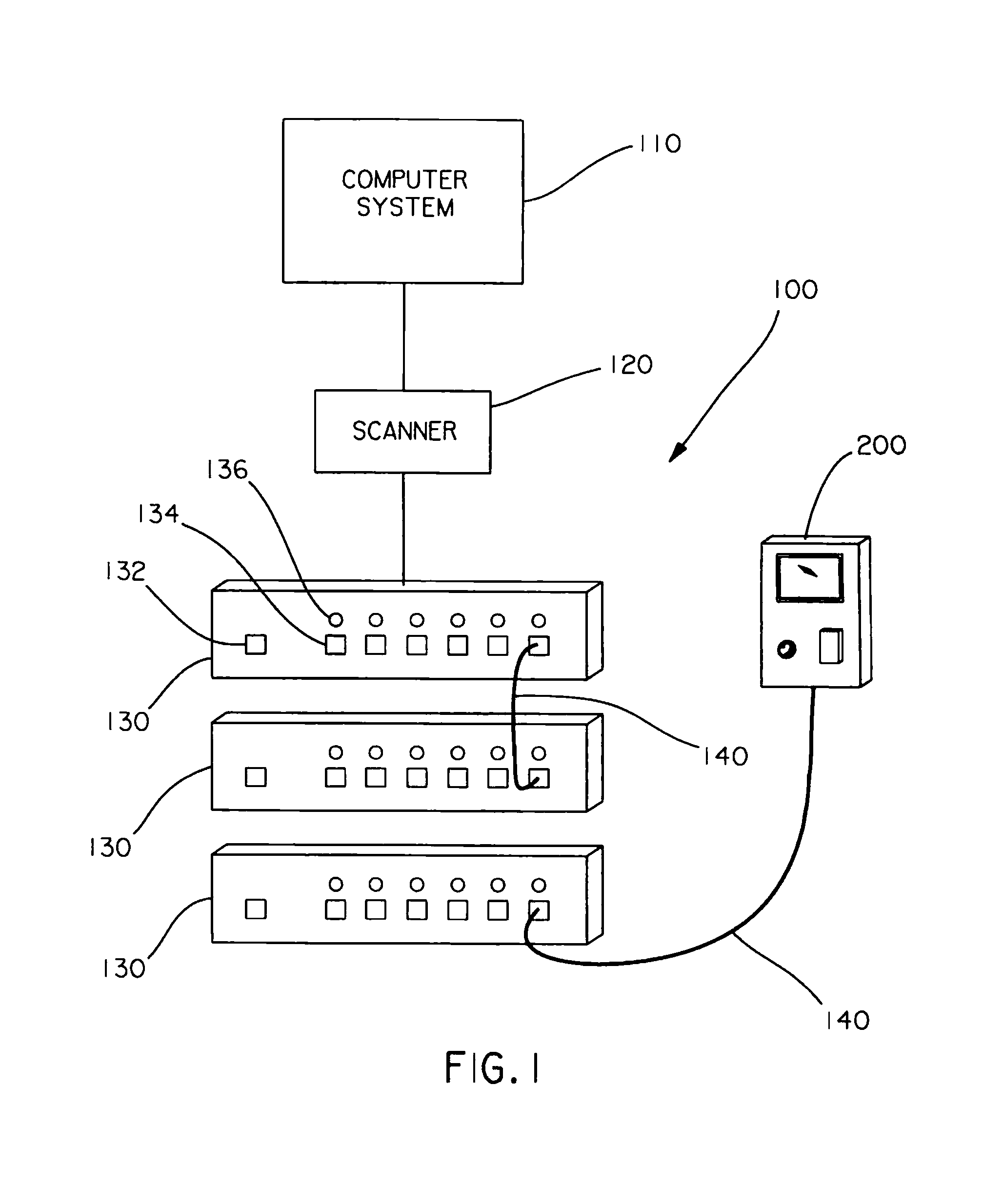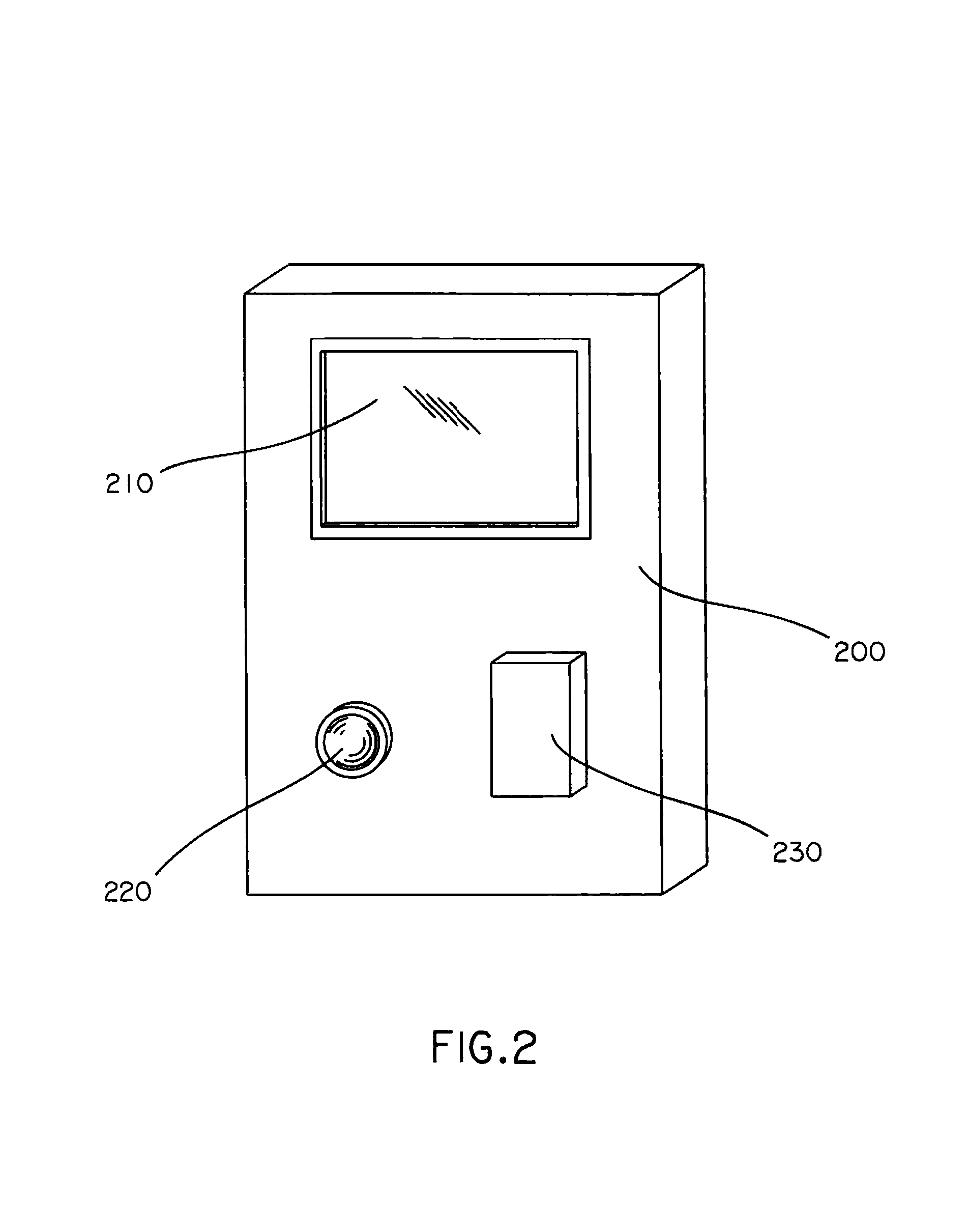Network revision system with local system ports
a network revision system and local system technology, applied in the field of network revision system with local system ports, can solve the problems of increasing the presence and severity of spaghetti cabling, and increasing the difficulty of tracking a single cable from end to end in the lan
- Summary
- Abstract
- Description
- Claims
- Application Information
AI Technical Summary
Benefits of technology
Problems solved by technology
Method used
Image
Examples
Embodiment Construction
[0023]The invention is directed to apparatus and methods for facilitating the efficient maintenance and / or reconfiguration of a LAN using a system which includes an automatic direction and response system and a scanner system.
[0024]The complete disclosures of the previously filed provisional patent applications Ser. Nos. 60 / 252,517 filed Nov. 22, 2000; 60 / 257,396 filed Dec. 22, 2000; 60 / 270,811 filed Feb and No. 60 / 297,289 filed Jun. 11, 2001 are incorporated herein by reference.
[0025]The LAN 100, as shown in FIG. 1, may include a scanner 120, an optional information module 200, a number of network racks 130 having arrays of data ports 134 interconnected by a large number of cords 140, LEDs 136 adjacent to tile data ports 134, and a multitude of system ports 132 for connection to the system. Like other LAN reconfiguration direction and response systems, instructions for reconfiguring the LAN are determined and communicated by a computer system 110 or the like which controls the LAN....
PUM
 Login to View More
Login to View More Abstract
Description
Claims
Application Information
 Login to View More
Login to View More - R&D
- Intellectual Property
- Life Sciences
- Materials
- Tech Scout
- Unparalleled Data Quality
- Higher Quality Content
- 60% Fewer Hallucinations
Browse by: Latest US Patents, China's latest patents, Technical Efficacy Thesaurus, Application Domain, Technology Topic, Popular Technical Reports.
© 2025 PatSnap. All rights reserved.Legal|Privacy policy|Modern Slavery Act Transparency Statement|Sitemap|About US| Contact US: help@patsnap.com



